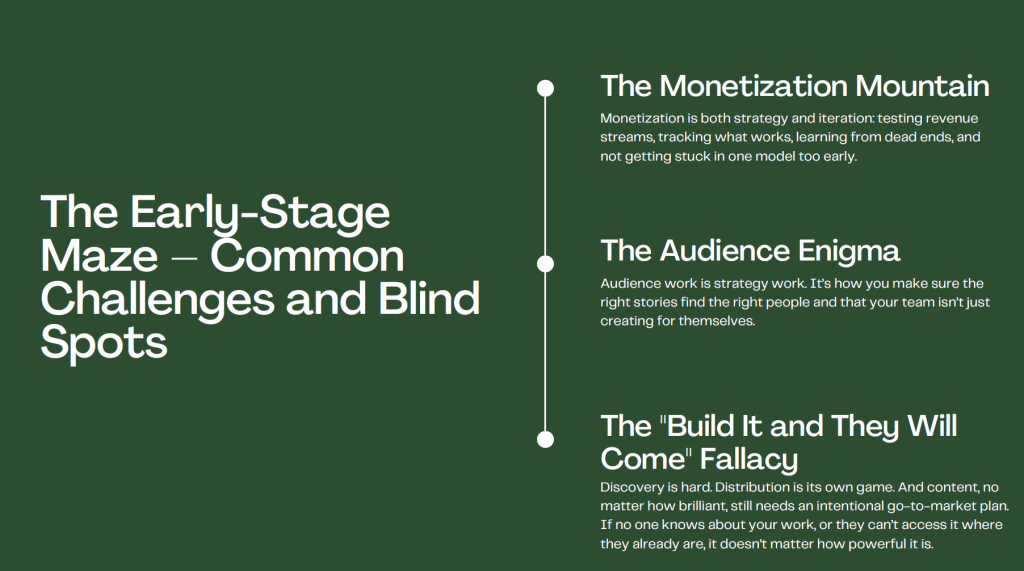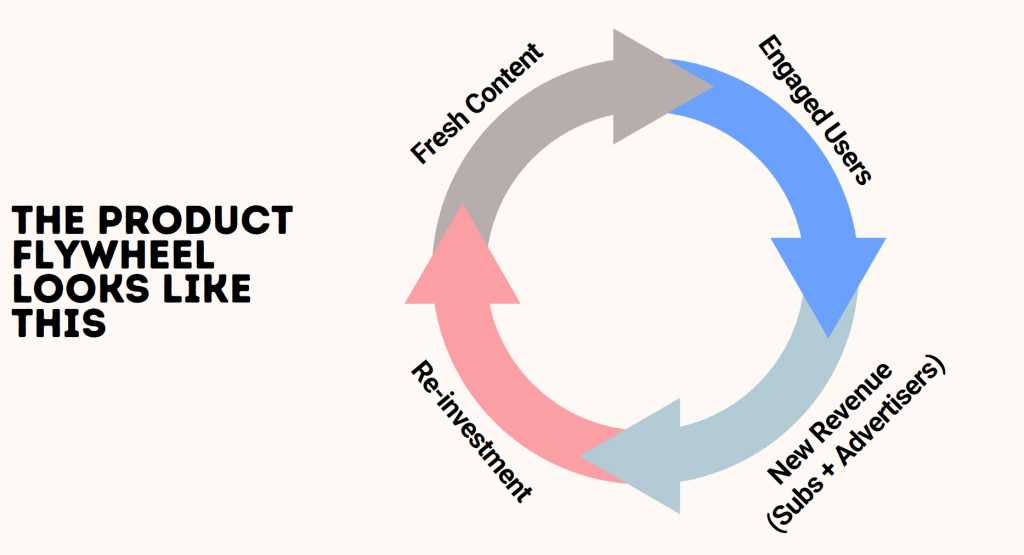By Muhammad Dalhatu
The Nigeria Media Innovation Program (NAMIP) gathered 19 participants from 16 media organizations for an intensive five-day Media Business Bootcamp focused on developing sustainable media businesses in Nigeria from May 19 – 23, 2025. The Media Business Bootcamp was a comprehensive approach that combined training, intervention, and a masterclass in media entrepreneurship. Throughout the bootcamp, participants engaged in workshops and discussions designed to equip them with essential tools and knowledge for success in the media industry. This includes topics such as business strategy, effective operational systems, and measures for long-term sustainability.
From the very first day, the facilitators made it clear that building a successful media organization in Nigeria requires more than just passion. It demands a strategic approach, well-structured systems, and a focus on sustainable practices that can adapt to the ever-evolving media landscape.
The Bigger Picture: Reimagining Nigerian Media
The bootcamp opened with a keynote by Deji Adekunle, NAMIP’s Program Director, who laid the foundation by reflecting on Nigeria’s evolving media ecosystem. He traced the history of media innovation while underlining the mission of the Media Development Investment Fund (MDIF) in supporting independent journalism under threat. For the participants, it was a reminder that media is not just about storytelling, it’s about defending the public’s right to truth in a fragmented and fragile information age.
The opening panel, led by Dara Ajala, NAMIP’s Program Manager, encouraged participants to think about the concepts of legacy, innovation, and resilience. The message was both simple and impactful, Nigerian media ventures must evolve to survive, or they risk extinction. This evolution should be based on core values rather than merely following trends.
Diagnosing the Startup Struggle
The next session was led by Anita Eboigbe, with a focus on media entrepreneurship and ecosystems for early-stage founders. She discussed the layers of chaos many media entrepreneurs experience, such as wearing too many hats, lack of strong organizational structures, and a lack of clear revenue strategies.

Photo Credit: MDIF – NAMIP
Anita emphasized that building media ventures requires more than great content. Strong operations, an engaged audience, thoughtful revenue models, and a committed team are just as crucial. She urged founders to stop romanticizing the ‘hustle’ and start treating their businesses like the real institutions they are trying to become. One insight that lingered long after her session concluded was that while media begins and ends with people, its survival depends significantly on having a solid structure in place to support and sustain those human elements. You can also check out Anita’s tips on the fundamentals of building a profitable newsroom here.
Finance Isn’t Just for Accountants
Oluwaseun Adebowale from MacAdebowale Advisory (MAPS Advisory) followed suit with a crash course in financial planning for media startups. He shattered the myth that financial discipline is a luxury, reframing it as a survival tool. Using clear frameworks and KPI dashboards, he taught participants how to assess whether their business models were viable or just vanity.
From calculating burn rate and customer lifetime value (LTV) to tracking churn and unit economics, his session demystified the numbers that make or break a media venture. What stood out most was Oluwaseun’s focus on cost modelling and pricing strategy. He urged founders to understand not only how to make money, but how to design businesses that last, even in a volatile economic environment. You can learn more from Oluwaseun’s tips here.
Setting Legal Structures
Media startups are often so focused on growth that they ignore the legal scaffolding they’re building on until it collapses. Emmanuel Effiong from ACIOE Associates walked the participants through Nigeria’s regulatory terrain, helping participants think through the right legal structure for their mission and monetization strategy.
A key note of caution he shared was that not properly registering your business, protecting your content, or defining your intellectual property rights could jeopardize years of hard work. He illustrated this point with real-world examples, including a cautionary tale of a media startup that lost control of its content because it failed to formalize contracts or trademark its brand. This example resonated strongly.
For many participants, this was the first time they seriously considered corporate governance and the importance of transparency, stakeholder trust, and ethical leadership in media ventures. Emmanuel previously shared similar tips, which you can read about here.
Building Products with a Purpose
If there was one session that sparked a product-building revolution in the room, it was Fu’ad Lawal’s. He walked participants through the five stops of the product journey, from spark to discovery, prototyping, launch, and eventually building a flywheel.
Fu’ad challenged participants to define their north-star metric, test assumptions fast, and align their product experience with real user pain. He used the Jobs-to-be-Done framework to shift mindsets from “what we make” to “what job our product does for users.”

Photo Credit: MDIF – NAMIP
His concept of the product flywheel, fresh content driving user engagement, generating revenue, and enabling reinvestment became a reference point for the rest of the bootcamp. For media organizations, it’s important to focus on building products rather than just publishing content without a system for growth.
Turning Passion into Profit Through Revenue and Sales
The final session of the bootcamp was led by Victor Olatunde from Salesplat, who tackled the subject of market strategy, revenue modelling, and sales design. Victor emphasized that media entrepreneurs must treat each product like a mini-business. He broke down the difference between consumers (the audience) and customers (those who pay), and taught participants how to craft value propositions that resonate with both.
More importantly, he demystified go-to-market strategies from choosing the right promotional channels and designing pricing models to creating bundled offers and pitching to advertisers. His session didn’t just answer “how do I make money?” It answered the deeper question, “What are people really paying me for?” Victor also previously shared similar tips, which you can read about here.
From Bootcamp to Blueprint
By the end of the five-day bootcamp, it was clear that the participants had undergone a significant transformation. No longer did they see themselves merely as media founders; they had evolved into multifaceted thinkers embodying the roles of CEOs, product strategists, financial planners, and legal architects. This shift in mindset was a critical highlight of NAMIP’s Media Business Bootcamp, which proved to be more than just an educational program; it was a transformative experience aimed at empowering the next generation of Nigerian media leaders.
The bootcamp fostered a sense of camaraderie among attendees, creating a stronger network of informed and prepared media entrepreneurs ready to make impactful contributions to the Nigerian media ecosystem. By the end of the week, participants emerged not only with a richer understanding of the media industry but also with the confidence and community support necessary to pursue their entrepreneurial aspirations successfully. This bootcamp was, indeed, a catalyst for change, setting the stage for a new wave of innovation in Nigeria’s media landscape.

